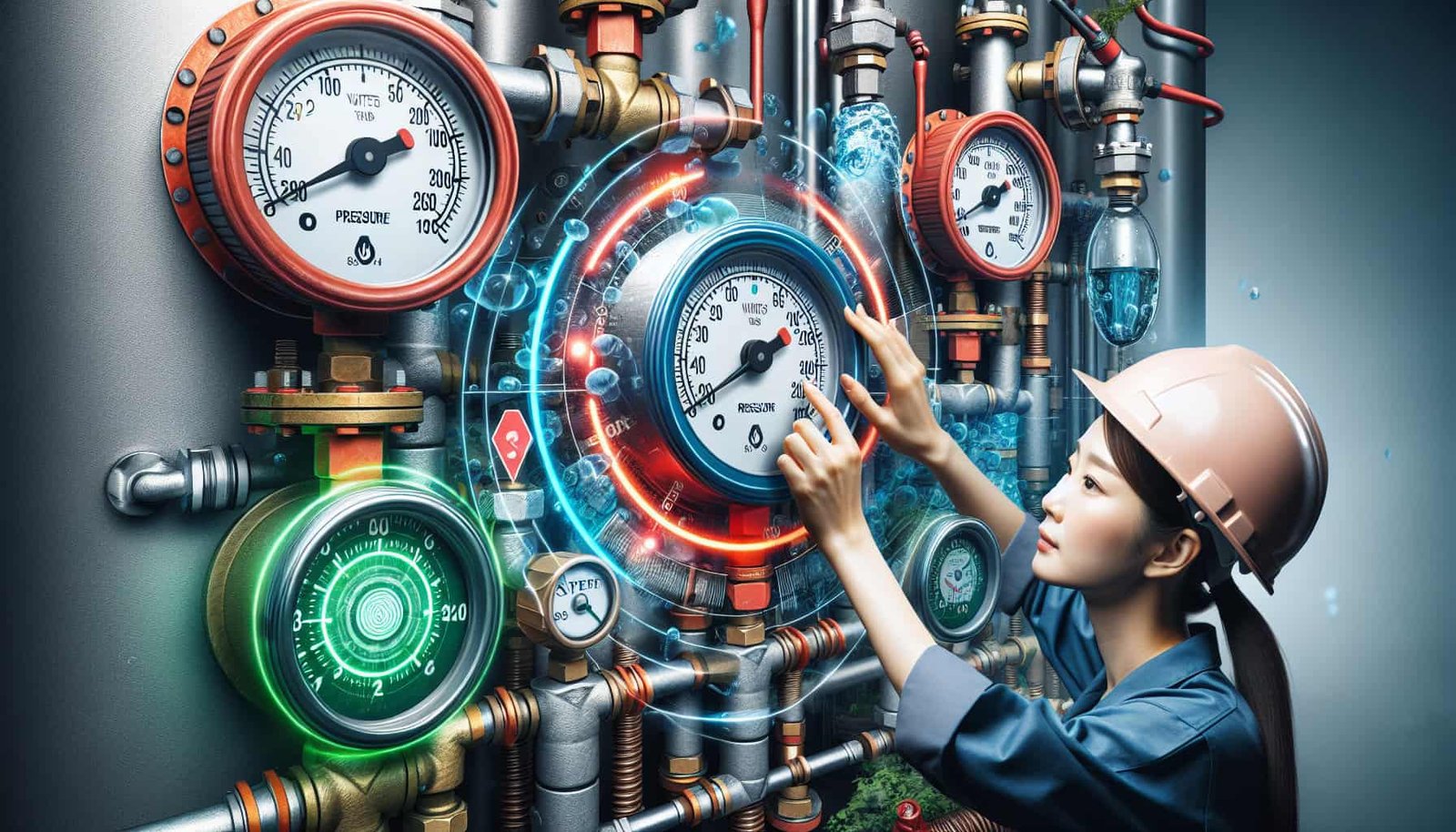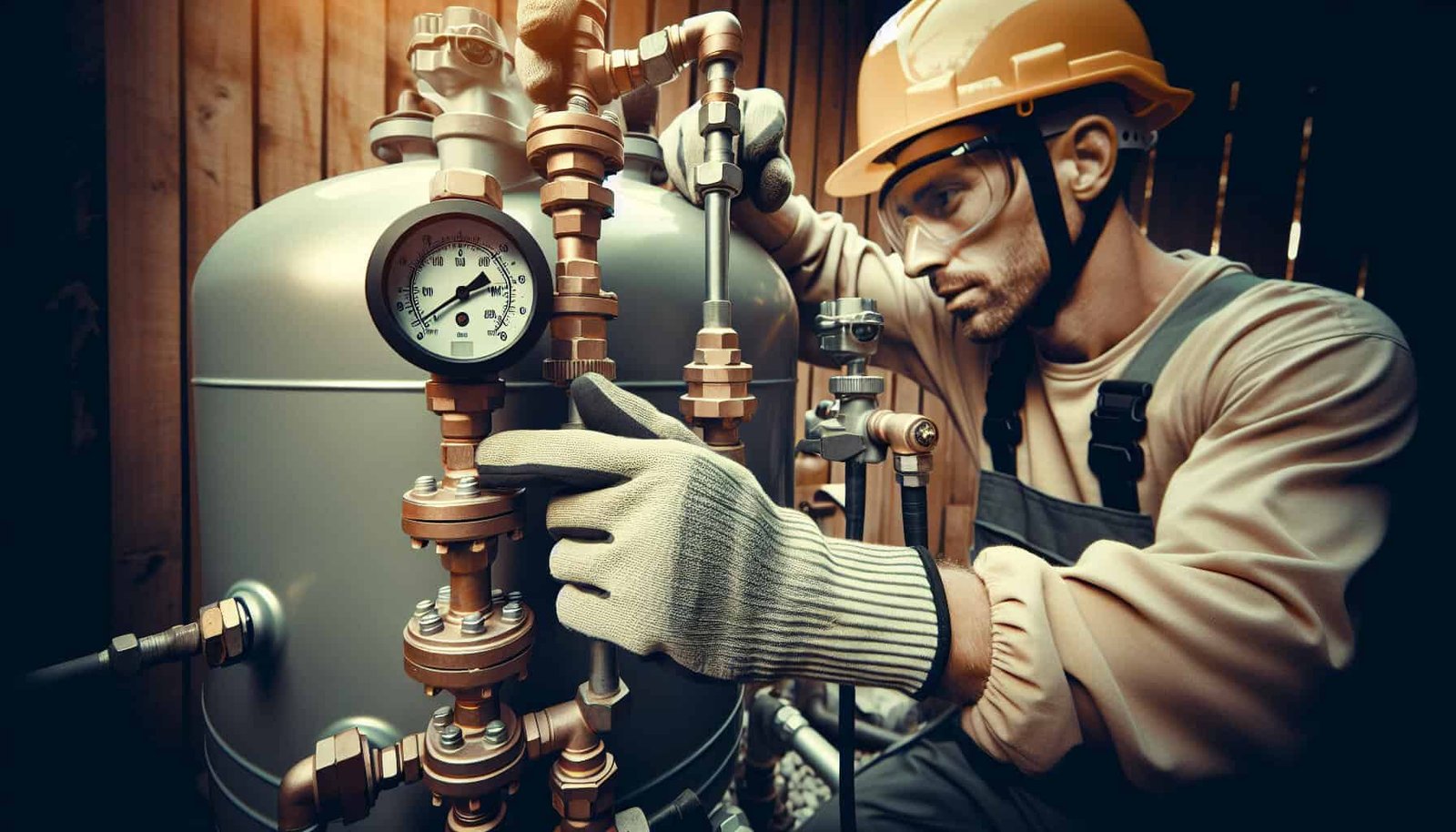Are you concerned about the safety of your well water pressure tank? Worried about potential issues that may arise during maintenance checklists? Well, fear not! In this article, we will explore various ways in which you can safeguard your well against safety issues associated with well water pressure tank maintenance checklists. By following some simple guidelines and taking necessary precautions, you can ensure the long-lasting functionality and safety of your well water pressure tank. So, let’s dive right in and discover the steps you can take to protect your well-water supply!
Importance of Well Water Pressure Tank Maintenance
Maintaining the well water pressure tank is crucial for the overall functionality and safety of your well system. Neglecting proper maintenance can not only affect the quality of your water but also lead to serious safety hazards. By understanding the importance of well water pressure tank maintenance, you can prevent contaminants, maintain water flow, and ensure the longevity of your equipment.
Preventing Contaminants
Regular maintenance of the well water pressure tank is essential to prevent the occurrence of contaminants in your water supply. Over time, sediment, rust, and other debris can accumulate in the tank, compromising the quality of your water. By regularly cleaning and flushing the tank, you can remove these contaminants and ensure that your water remains clean and safe to use.
Maintaining Water Flow
Another crucial aspect of well water pressure tank maintenance is to ensure a consistent and adequate water flow. The pressure tank plays a vital role in maintaining water pressure throughout your plumbing system. Without proper maintenance, the tank can become clogged or damaged, resulting in poor water flow or even a complete loss of water supply. Regular inspections and maintenance can help you identify and address any issues before they escalate and affect your water flow.
Ensuring Equipment Longevity
Investing in proper maintenance of your well water pressure tank can significantly extend its lifespan and save you from costly repairs or replacements. By regularly inspecting and maintaining the tank, you can identify and fix any minor issues before they become major problems. This proactive approach not only helps in preserving your tank’s functionality but also ensures the longevity of other well system components, such as pumps and valves.
Understanding the Safety Issues
While maintaining water quality and flow are crucial, it is equally important to be aware of the safety issues associated with well water pressure tank maintenance. Ignoring these safety concerns can result in accidents, causing harm to you or your property. By understanding the potential safety hazards, you can take necessary precautions and protect yourself and your well system.
Primer Explosion
Primer explosions are one of the safety hazards associated with well water pressure tank maintenance. The primer, a chemical compound that helps ignite the pump, can be highly flammable. Without proper handling, storage, and maintenance, the primer can explode, causing significant damage and injury. It is important to educate yourself about the proper handling and storage of primer and follow the manufacturer’s guidelines carefully.
Electrical Hazards
Electrical hazards are another common safety concern when it comes to well water pressure tank maintenance. Your well system relies on an electrical connection to operate, which can pose a risk if not handled with caution. Faulty wiring or improper grounding can lead to electric shock or fire hazards. It is recommended to hire a licensed electrician to ensure safe electrical connections and regularly inspect the electrical components of your well system.
Pressure-related Accidents
Pressure-related accidents can occur if the well water pressure tank is not properly maintained. A tank with excessive pressure can burst, causing significant damage to your property and posing a risk to your safety. Regular monitoring of water pressure and ensuring the functionality of pressure relief mechanisms is crucial to prevent pressure-related accidents.

Regular Inspection and Maintenance
To ensure the safety and efficiency of your well water pressure tank, regular inspection and maintenance are necessary. By following a comprehensive checklist, you can identify any issues and address them promptly, avoiding further damage or safety risks.
Checking for Leaks
Regularly checking for leaks is a crucial step in maintaining your well water pressure tank. Leaks can lead to water wastage, decreased water pressure, and potential water damage to your property. Inspect the tank and all associated pipes, connections, and fittings for any signs of leaks, such as dripping water or moisture buildup. If you notice any leaks, promptly repair or replace the affected components to prevent further damage and ensure optimal functioning of your well system.
Monitoring Water Pressure
Monitoring water pressure is essential to detect any abnormalities or fluctuations in the system. A sudden drop or increase in water pressure can indicate an issue with the pressure tank or other components of your well system. Regularly check the pressure gauge and compare it with the recommended operating pressure to ensure that your system is functioning within the desired range. If you notice any significant deviations, it is advisable to consult a professional for further evaluation and necessary repairs.
Inspecting Tank Components
Regular inspection of the tank components is crucial for identifying potential issues and ensuring the proper functioning of your well system. Inspect the tank’s exterior for any signs of physical damage, such as cracks or corrosion, which may compromise its integrity. Additionally, inspect all valves, fittings, and pressure relief mechanisms to ensure that they are clean, properly connected, and functioning as intended. Any damaged or faulty components should be promptly replaced to prevent accidents and maintain optimal performance.
Proper Well Water Pressure Tank Maintenance Checklist
To effectively maintain your well water pressure tank, it is important to follow a comprehensive maintenance checklist. By regularly performing the following tasks, you can safeguard your well against safety issues and ensure the optimal functioning of your well system.
Scheduling Regular Inspections
Schedule regular inspections with a certified well contractor who can assess the condition of your well water pressure tank and provide expert guidance on necessary maintenance and repairs. Professionals can identify hidden issues or potential risks that may not be apparent to an untrained eye.
Cleaning and Flushing the Tank
Regularly clean and flush the tank to remove any accumulated sediment, debris, or bacteria. This can be done by draining the tank completely and scrubbing the interior to eliminate any build-up. Flushing the tank with clean water will help remove any remaining impurities. Follow the manufacturer’s guidelines or consult a professional for specific cleaning recommendations.
Inspecting and Replacing Valves
Inspect all valves associated with your well water pressure tank, including the shut-off valve and pressure relief valve. Ensure that they are clean, properly connected, and functioning correctly. If you notice any signs of wear, damage, or leakage, promptly replace the valves to maintain proper control and prevent safety hazards.
Maintaining a Safe Electrical Connection
Ensure that the electrical connection of your well water pressure tank is safe and properly grounded. This involves regularly checking the wiring, control box, and connections for any issues, such as fraying, corrosion, or loose connections. If you are unsure about handling electrical components, it is advisable to hire a licensed electrician to perform this task.
Ensuring Pressure Relief Mechanism Functionality
The pressure relief mechanism is designed to maintain safe pressure levels within the tank. Regularly test and ensure proper functionality of this mechanism to prevent excessive pressure build-up. Follow the manufacturer’s instructions or consult a professional to understand how to test and maintain the pressure relief mechanism effectively.

Consulting Professionals for Safety and Maintenance
While some maintenance tasks can be performed by homeowners, it is essential to consult professionals for certain aspects of well water pressure tank maintenance to ensure safety and expertise.
Hiring Certified Well Contractors
When it comes to complex maintenance tasks or addressing major issues with your well water pressure tank, it is advisable to hire certified well contractors. These professionals have the knowledge, experience, and specialized tools required to effectively inspect, repair, or replace your tank and associated components. They can also provide valuable advice on proper maintenance practices and ensure the safety and longevity of your well system.
Trusting Licensed Electricians
For any electrical-related tasks, it is crucial to seek the assistance of licensed electricians. These professionals are trained in working with electrical systems and can ensure safe electrical connections, grounding, and maintenance. Hiring a licensed electrician not only ensures compliance with electrical codes but also minimizes the risk of electrical hazards.
Seeking Expert Guidance
If you have any concerns or questions about the maintenance or safety of your well water pressure tank, do not hesitate to seek expert guidance. Local health departments, environmental agencies, or well associations can provide valuable information and resources to help you safeguard your well and comply with regulations.
Emergency Preparedness for Safety
As a responsible homeowner, it is important to be prepared for emergencies related to your well water pressure tank. Knowing how to respond in an emergency can potentially save lives and prevent significant damage to your property.
Knowing how to Shut Off Power and Water Supply
In case of a sudden malfunction or an emergency situation, it is vital to know how to shut off the power and water supply to your well system. Locate the main electrical switch and shut-off valve, and educate yourself and other household members on their proper operation. Regularly review and practice the shut-off procedures to ensure everyone’s familiarity and confidence in responding to emergencies.
Understanding Emergency Release Methods
Familiarize yourself with the emergency release methods specific to your well water pressure tank. Some tanks may have a manual release valve or a bypass system that allows you to release pressure in case of an emergency. Understand how these emergency release methods work and practice their operation to ensure their effectiveness and your ability to respond quickly and efficiently during emergencies.
Arranging Regular Emergency Drills
To enhance your preparedness for emergencies, consider arranging regular emergency drills with your household members. Run through different scenarios, including power outages, pump failures, or pressure-related accidents, and practice the necessary steps and procedures. By simulating emergency situations, you can identify any shortcomings in your preparedness plans and address them in a timely manner.

Educating Household Members
The safety and functionality of your well water pressure tank are not solely dependent on the homeowner but extend to every household member. Educating your family about the potential safety hazards and proper handling and operation of the well system is crucial for overall safety.
Creating Awareness about Safety Hazards
Raise awareness among household members about the safety hazards associated with the well water pressure tank. Inform them about potential risks such as electrical hazards, pressure-related accidents, and chemical exposure. Encourage a culture of safety by discussing best practices, potential dangers, and the importance of regular maintenance. By creating awareness, you empower each household member to play an active role in the safety and maintenance of the well system.
Guidelines for Safe Handling and Operation
Establish clear guidelines and protocols for the safe handling and operation of the well water pressure tank. Educate household members on how to recognize signs of trouble, steps to take in case of an emergency, and the importance of adhering to maintenance schedules. By providing clear instructions and reinforcing safe practices, you contribute to a safe and healthy environment for everyone in your household.
Importance of Water Quality Testing
Maintaining the well water pressure tank is not just about ensuring a functional system; it also involves monitoring and maintaining the quality of your water supply. Regular water quality testing is vital for early detection of contaminants and potential health risks.
Regular Testing for Contaminants
Schedule regular water quality tests to evaluate the presence of contaminants in your well water. Test for common pollutants such as bacteria, nitrates, heavy metals, or chemicals. Understand the recommended testing frequency and follow it diligently to ensure a healthy and safe water supply for your household. If any contaminants are detected, consult a qualified professional for guidance on appropriate treatment measures.
Identifying Potential Health Risks
Water quality testing helps identify potential health risks associated with your well water. Certain contaminants, even in low concentrations, can have detrimental effects on your health. Regular testing allows you to address any issues promptly, implement appropriate treatments, and safeguard the well-being of your household.

Awareness of Local Regulations and Codes
Compliance with local regulations and building codes is paramount when it comes to well water pressure tank maintenance. Familiarize yourself with the specific regulations and codes applicable to your location to ensure the safety and legal compliance of your well system.
Understanding Well Water Regulations
Different regions may have specific regulations pertaining to well water quality, well construction, and maintenance. Educate yourself about these regulations to ensure that your well system meets the required standards. This may involve obtaining permits, submitting water quality reports, or adhering to specific construction guidelines. Working in collaboration with local authorities will help you navigate through the regulatory landscape and maintain a reliable and compliant well system.
Complying with Building Codes
Building codes dictate the minimum safety and construction standards for well water pressure tanks and their associated components. Ensure that your well system meets these building code requirements to minimize safety hazards and legal implications. Consult a professional or local building authorities to understand and adhere to the relevant building codes applicable to your well system.
Conclusion
Maintaining your well water pressure tank is not only crucial for the functionality and longevity of your well system but also for the safety and well-being of your household. By understanding the importance of regular maintenance, following a comprehensive checklist, and seeking professional guidance when needed, you can safeguard your well against safety issues associated with well water pressure tank maintenance. Prioritizing the cleanliness of your water supply, being aware of potential safety hazards, and complying with regulations and codes are essential steps to ensure the optimal performance and longevity of your well system. By taking a proactive approach and educating yourself and your household members, you can enjoy a reliable, safe, and clean water supply for years to come.


